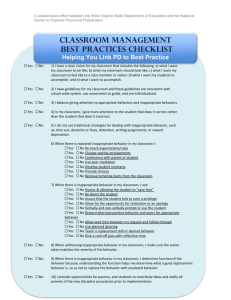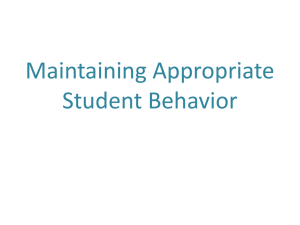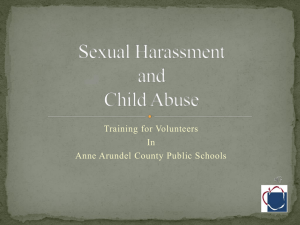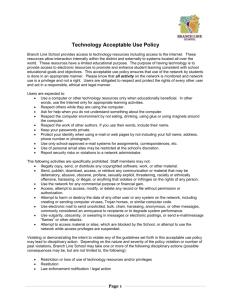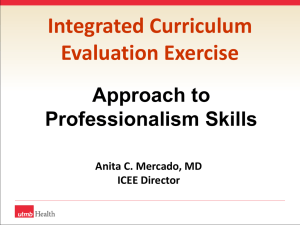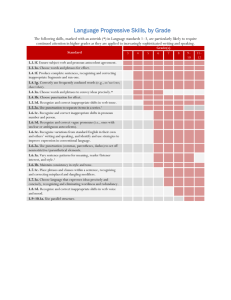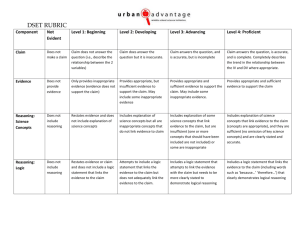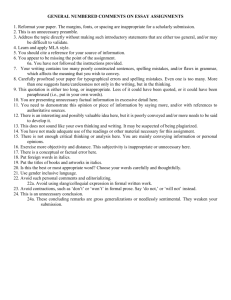Positive Behavior Intervention Plan
advertisement
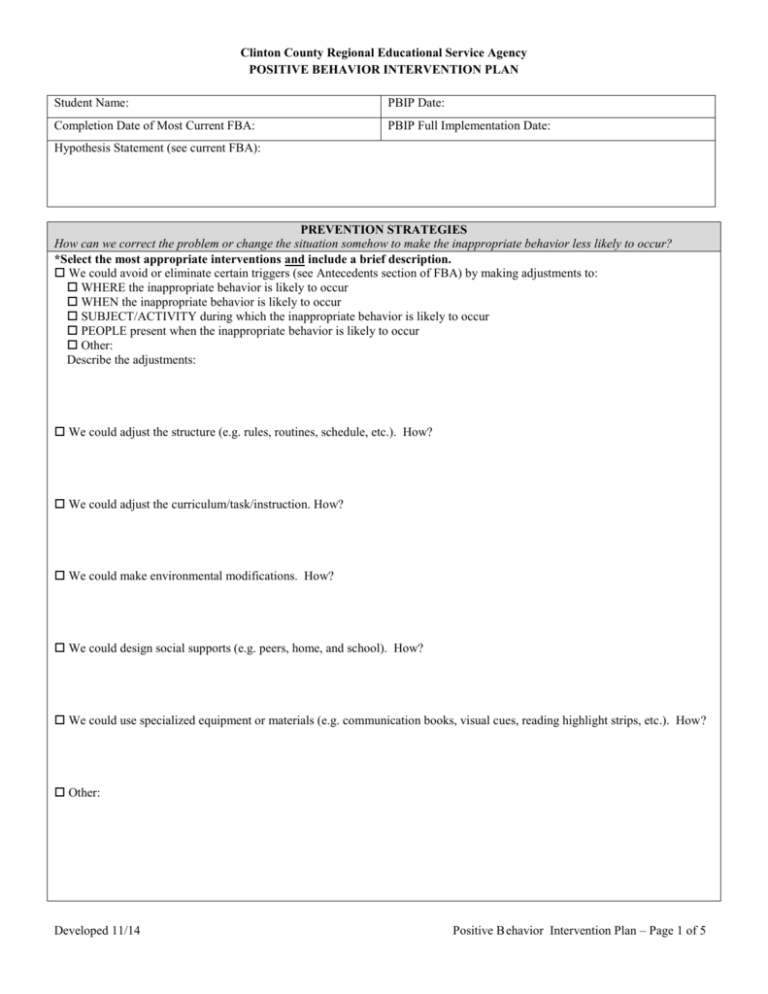
Clinton County Regional Educational Service Agency POSITIVE BEHAVIOR INTERVENTION PLAN Student Name: PBIP Date: Completion Date of Most Current FBA: PBIP Full Implementation Date: Hypothesis Statement (see current FBA): PREVENTION STRATEGIES How can we correct the problem or change the situation somehow to make the inappropriate behavior less likely to occur? *Select the most appropriate interventions and include a brief description. We could avoid or eliminate certain triggers (see Antecedents section of FBA) by making adjustments to: WHERE the inappropriate behavior is likely to occur WHEN the inappropriate behavior is likely to occur SUBJECT/ACTIVITY during which the inappropriate behavior is likely to occur PEOPLE present when the inappropriate behavior is likely to occur Other: Describe the adjustments: We could adjust the structure (e.g. rules, routines, schedule, etc.). How? We could adjust the curriculum/task/instruction. How? We could make environmental modifications. How? We could design social supports (e.g. peers, home, and school). How? We could use specialized equipment or materials (e.g. communication books, visual cues, reading highlight strips, etc.). How? Other: Developed 11/14 Positive B ehavior Intervention Plan – Page 1 of 5 TEACHING APPROPRIATE BEHAVIOR What alternative behavior would meet the same function/need for the student? REPLACEMENT BEHAVIOR: Rather than engaging in the inappropriate behavior, we want this student to: (define replacement behavior) INSTRUCTIONAL STRATEGIES: What skills will the student need to be taught in order to successfully demonstrate the replacement behavior? Social: How will these skills be taught? Direct instruction Group instruction Modeling Role-play Guided practice Natural opportunities Other: Who will provide the instruction? When will instruction take place? Where will instruction take place? How often will instruction take place? How or when can we give opportunities for the student to practice the skills? How will we prompt the student to utilize his/her newly acquired skills? Communication: How will these skills be taught? Direct instruction Group instruction Other: Modeling Role-play Guided practice Natural opportunities Guided practice Natural opportunities Who will provide the instruction? When will instruction take place? Where will instruction take place? How often will instruction take place? How or when can we give opportunities for the student to practice the skills? How will we prompt the student to utilize his/her newly acquired skills? Organization: How will these skills be taught? Direct instruction Group instruction Other: Modeling Role-play Who will provide the instruction? When will instruction take place? Where will instruction take place? How often will instruction take place? How or when can we give opportunities for the student to practice the skills? How will we prompt the student to utilize his/her newly acquired skills? Developed 11/14 Positive B ehavior Intervention Plan – Page 2 of 5 Academic: How will these skills be taught? Direct instruction Group instruction Other: Modeling Role-play Guided practice Natural opportunities Guided practice Natural opportunities Who will provide the instruction? When will instruction take place? Where will instruction take place? How often will instruction take place? How or when can we give opportunities for the student to practice the skills? How will we prompt the student to utilize his/her newly acquired skills? Other: How will these skills be taught? Direct instruction Group instruction Other: Modeling Role-play Who will provide the instruction? When will instruction take place? Where will instruction take place? How often will instruction take place? How or when can we give opportunities for the student to practice the skills? How will we prompt the student to utilize his/her newly acquired skills? INCREASING APPROPRIATE BEHAVIOR What will we do to increase the occurrence of the replacement behavior? IDENTIFY POTENTIAL REINFORCERS: What preferred items, activities, and/or people might be used as incentives in an intervention for this student? ESTABLISH SPECIFIC BEHAVIOR CRITERIA: What exactly should the student do to earn the above reinforcers? DETERMINE SCHEDULE OF REINFORCEMENT: How frequently can the student earn the above reinforcers? IDENTIFY DELIVERY SYSTEM: What intervention tool(s) will we use to monitor the student’s behavior and deliver reinforcement? Self-monitoring system Point system Behavioral contract Behavior charts Tracking system Goal setting Group contingency Token economy Other: Developed 11/14 Lottery/raffle tickets Home note system Positive B ehavior Intervention Plan – Page 3 of 5 DECREASING INAPPROPRIATE BEHAVIOR What interventions will alter the way others respond to the inappropriate behavior so that it no longer is effective in receiving the desired outcome (i.e. gain or escape)? *Only select and describe the most appropriate interventions. We will modify the environment and/or use proximity management. Describe: We will ignore any/all occurrences of the inappropriate behavior, meanwhile attending to the appropriate behavior of other students. We will prompt or redirect each occurrence of the behavior by: Saying the following verbal prompt/reminder: Presenting the following non-verbal or visual prompt: Clarifying or re-teaching expectations and rules: Utilizing precision requests to ensure follow-through: Completing a teaching interaction (tell, show, do): Other: We will apply a structured consequence for the inappropriate behavior as follows: Loss of incentive/privilege: Time owed (___minutes from): In-class break time: Positive practice: Restitution: Parent contact or conference: Complete extra assignment/task: Other: We will implement a problem-solving or reflection activity: We will implement a level system including a hierarchy of consequences for inappropriate behavior (attach description of level system): Other: Developed 11/14 Positive Behavior Intervention Plan – Page 4 of 5 PROGRESS MONITORING How can we monitor the student’s behavior so we have a reliable record of progress? DATA COLLECTION METHODS: How often? Inappropriate Behavior Behavior Rating Scale throughout the day Frequency or Rate specific time period(s): % Intervals: every ______ minutes % Daily Activities Average duration Level system/Points Other: Replacement Behavior Behavior Rating Scale First Daily Opportunity (yes/no) Same method as inappropriate behavior Other: How often? throughout the day specific time period(s): DATA SUMMARY AND REVIEW: Titles/positions of person(s) responsible for collecting, summarizing, & graphing data? How often will the data be summarized? (Examples: daily, 3x/week, 2x/week, once a week, etc. It is recommended to summarize the data at least weekly.) DESIRED GOALS AND OUTCOMES: Progress toward goals will be assessed using the data collection methods chosen above. The goal for inappropriate behavior should be determined by the current baseline data (see current FBA or recent data). Inappropriate Behavior: Replacement Behavior: Note: For students with an IEP, behavioral goals in the IEP should reflect both the inappropriate and replacement behaviors. IMPLEMENTATION AND SUPPORT INTERVENTION FIDELITY: How will we know if the planned interventions are being implemented (e.g., observations, data collection, checklists, self-report, etc.)? Who will be responsible for making sure the plan is implemented? SUPPORT: List any training needs, material needs, or environmental arrangements needed prior to implementing the plan: PBIP PARTICIPANTS: Developed 11/14 Positive Behavior Intervention Plan – Page 5 of 5
